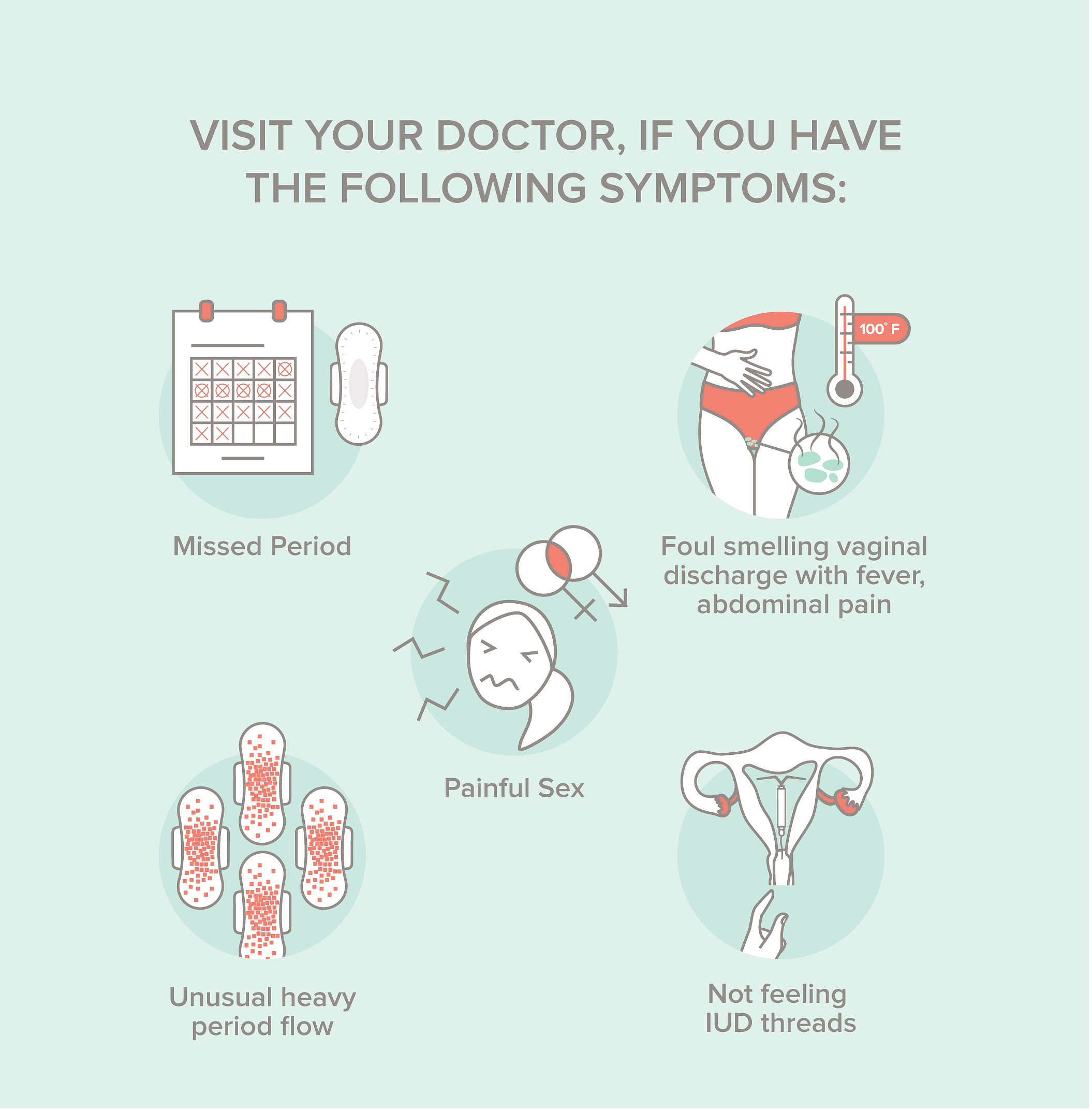IUD stands for Intra Uterine Device which is a reversible, temporary method of contraception to prevent unwanted pregnancies. It is one of the most effective methods which is easily available, user friendly, women-centric, and can last for 3-10 years once inserted.
There are 2 types of IUDs:
- Non Hormonal or Copper IUD – Also known as Copper T, these last for 3-10 years depending on the surface area of the copper impregnated in the IUD. They are purely used for contraception purposes.
- Hormonal IUD – These are commonly used hormones like Progesterone. It is used for contraception and treatment of periods problems or endometriosis in a woman. It usually lasts for 3-5 years.
What you can expect after IUD insertion varies as it depends on several things – the type of IUD, the timing, and the aseptic care taken during the insertion. But most importantly, how the woman’s body responds to it.
Let’s look at 2 periods – 3 months and 1 year – and find out what can happen differently:
Within the first 3 months
- Post insertion bleeding and period-like cramps – usually last for 12-24 hours
- The risk of infection is shown mostly during insertion, for a maximum of 20 days post the procedure. It is important to do the procedure in an aseptic manner under an antibiotics cover to minimise the risk. The risk is almost negligible afterwards.*
(One needs to remember that it does not protect from STIs ( Sexually Transmitted Infection) particularly in case of multiple partners.) - If the body doesn’t accept the IUD then it can push it outside the womb, also called as expulsion. It is rare but can happen within the first period after insertion. So it’s very important to see the gynaecologist for ‘coil check’* after the first period.
Feeling pinching pain at the time of sex or partner feeling the threads – this may be experienced for an initial few months till the coil threads soften. But one must get it checked as it can happen when threads are kept too long. - Irregular periods are common with Hormonal IUDs in about 20-30% of women in the first 2-3 months. This usually settles down as the tuning of external hormones and the body’s intrinsic hormones happen.
- The first one or two periods can be heavy with cramps after Copper IUD insertion. This will respond to medicines and settle down after 3 months.
Up to 1 year
- 1 out of 3 women can have light periods and absence of monthly periods due to the effect of hormone. A missed period with a Copper IUD, however, should be checked to rule out pregnancy as any contraceptive method can fail. The chances of this is 1 in 100 in IUD users.
- Abnormal bleeding in between periods or prolonged, frequent heavy bleeding can be seen with Copper IUDs. It may necessitate removal of the IUD if it’s affecting health.
- Ovarian cysts are fluids filled sacs or balloons on the ovaries are seen with Hormonal IUDs and do not give problems. They usually disappear spontaneously.
- Some women may notice excess vaginal wetness post Copper IUD. This discharge doesn’t have any itching or colour.
- Bloating, breast tenderness can be seen occasionally in hormonal IUD users.
It’s very important to have complete information about timing and frequency of the post IUD insertion check-ups.
It is recommended to see the gynaecologist after the first period, 6 months and annually for coil checks*.

We want to provide our community with authentic, reliable, and accessible content. To do so, we collaborate with various experts who write about a variety of topics – right from menstrual and sexual health to lifestyle and fitness.
You can read them right here. You can also check out articles written by Dr. Vaishali Joshi here.
*Coil check involves the internal gynaecological examination to see IUD threads. It confirms that IUD is in place and not expelled which is more likely to happen during menstrual flow in the first period after insertion.










1 Comment